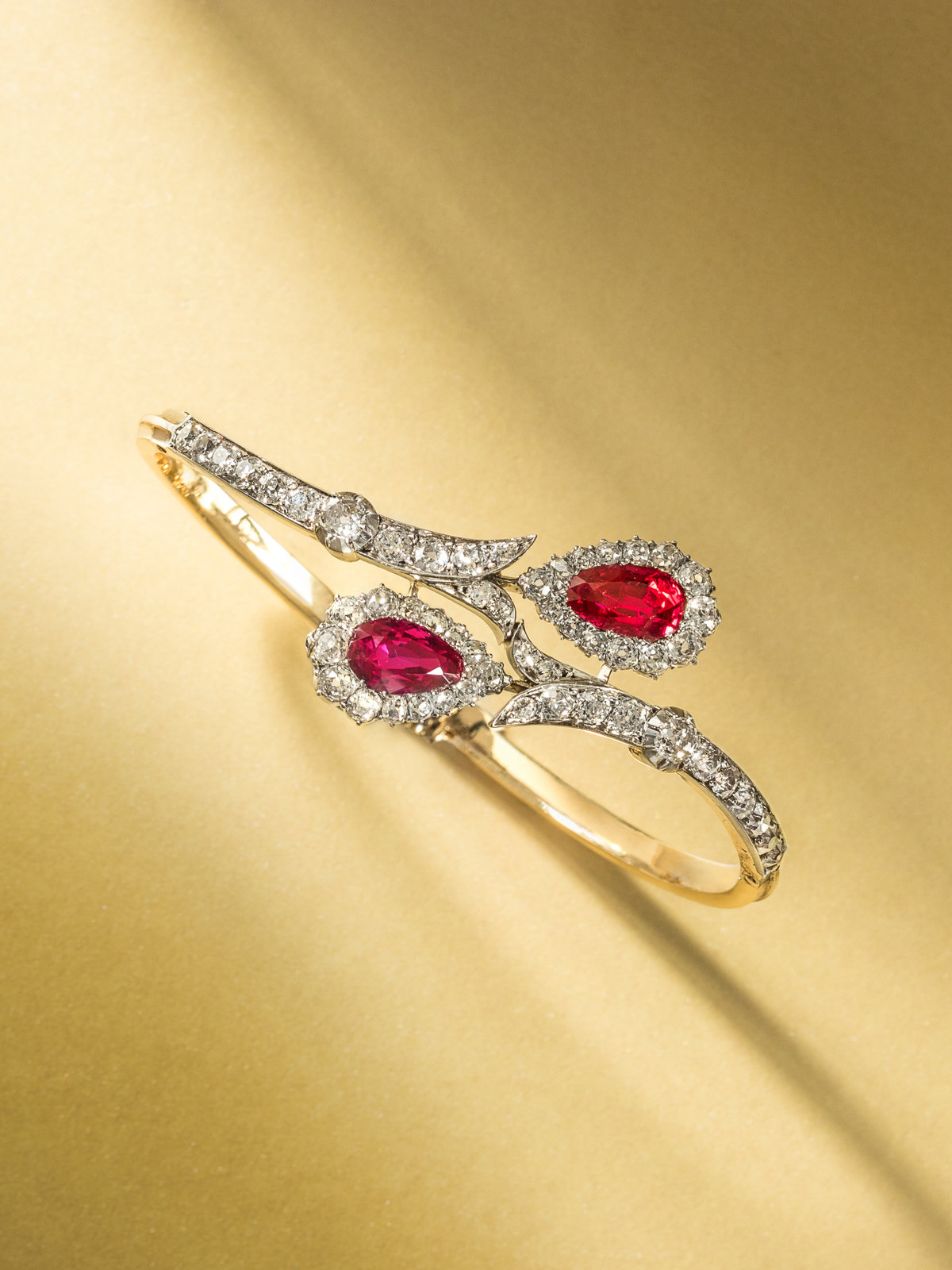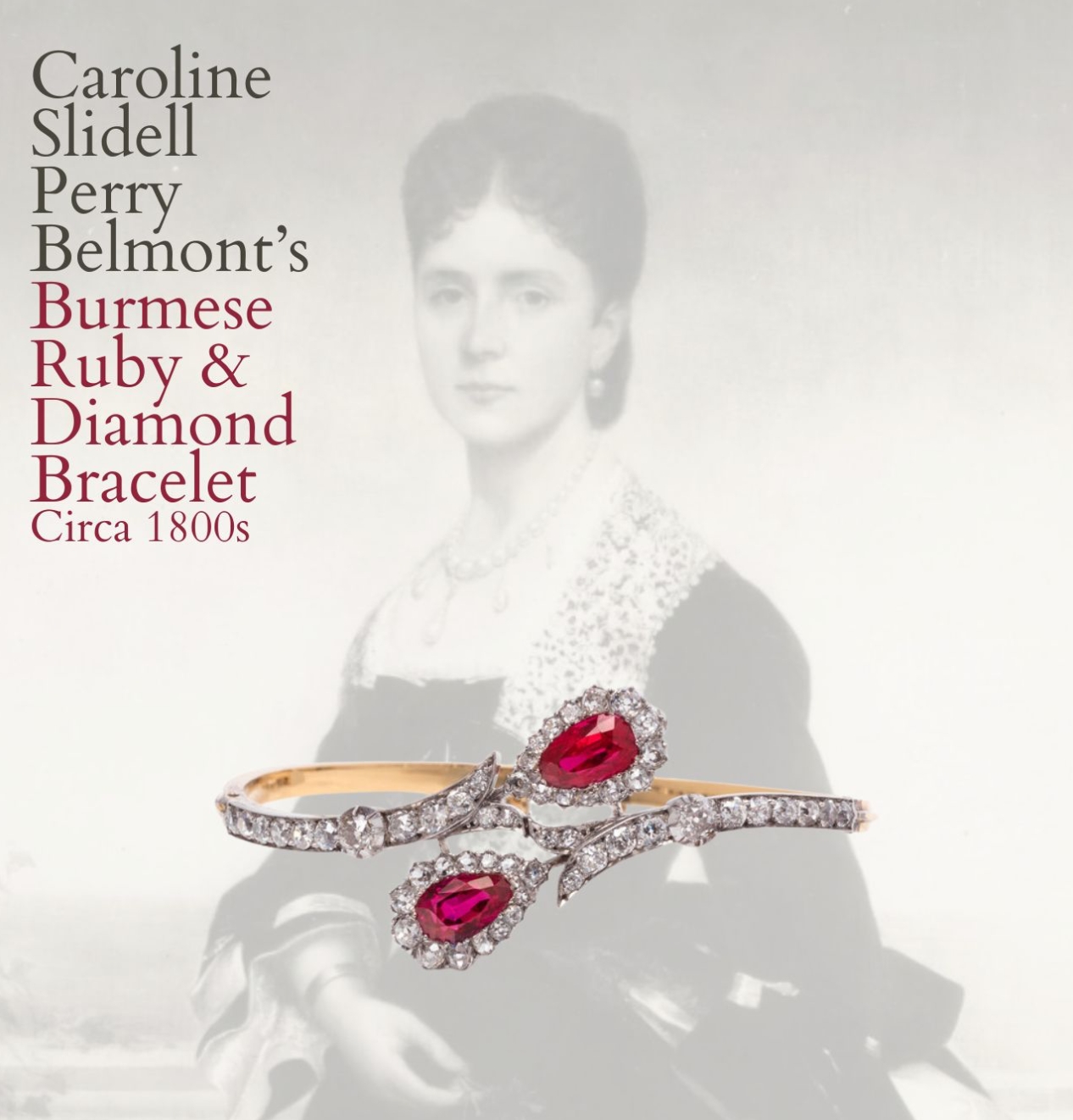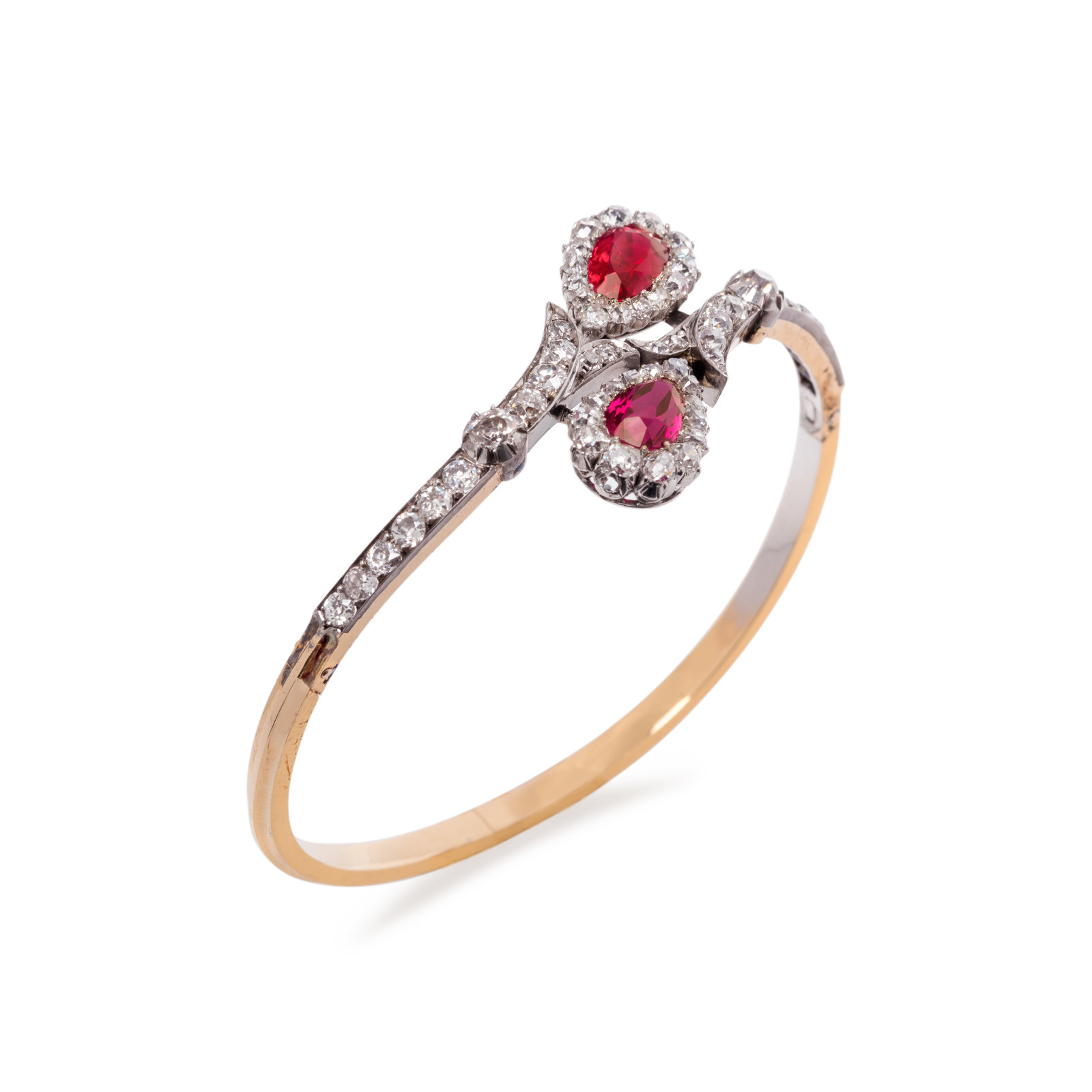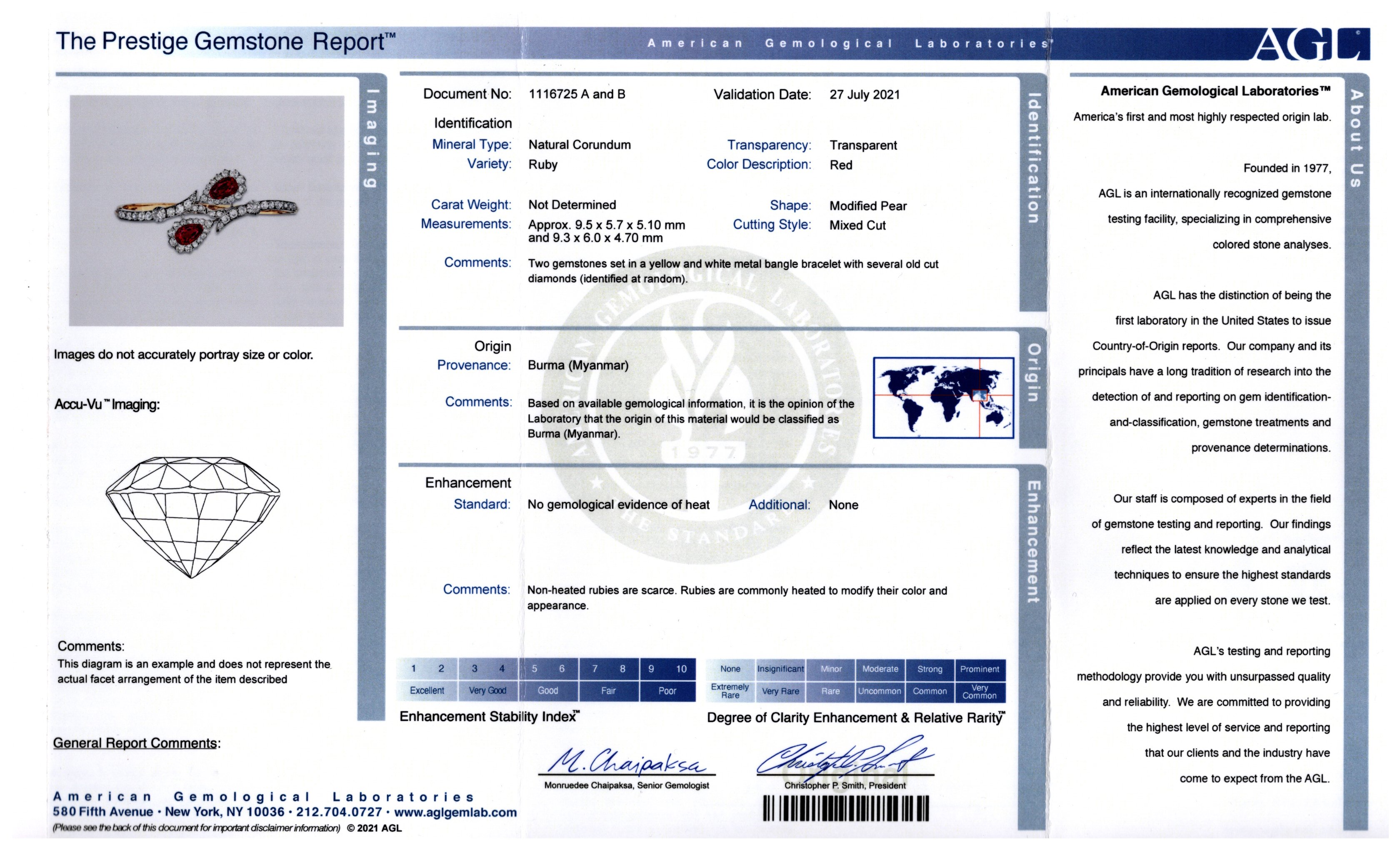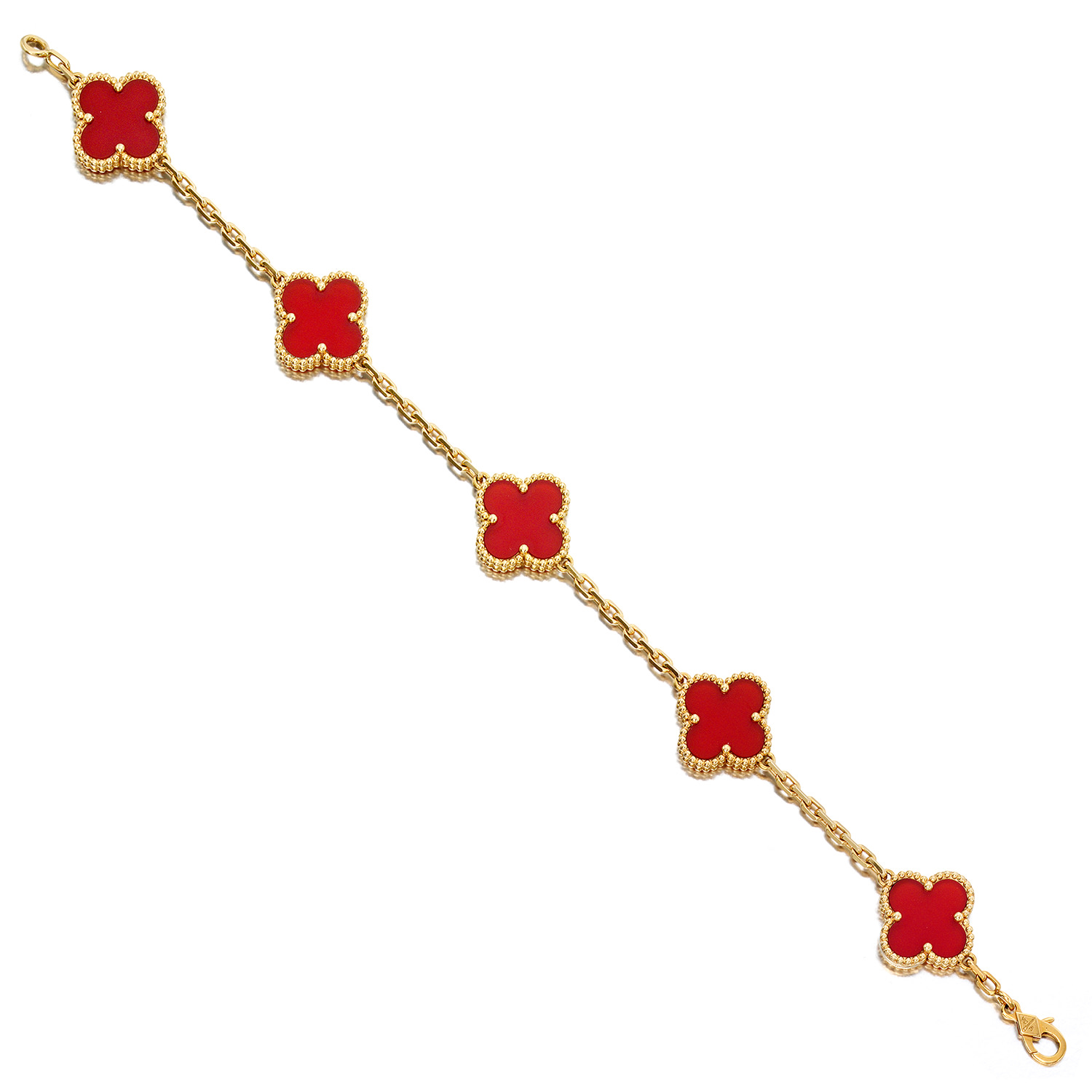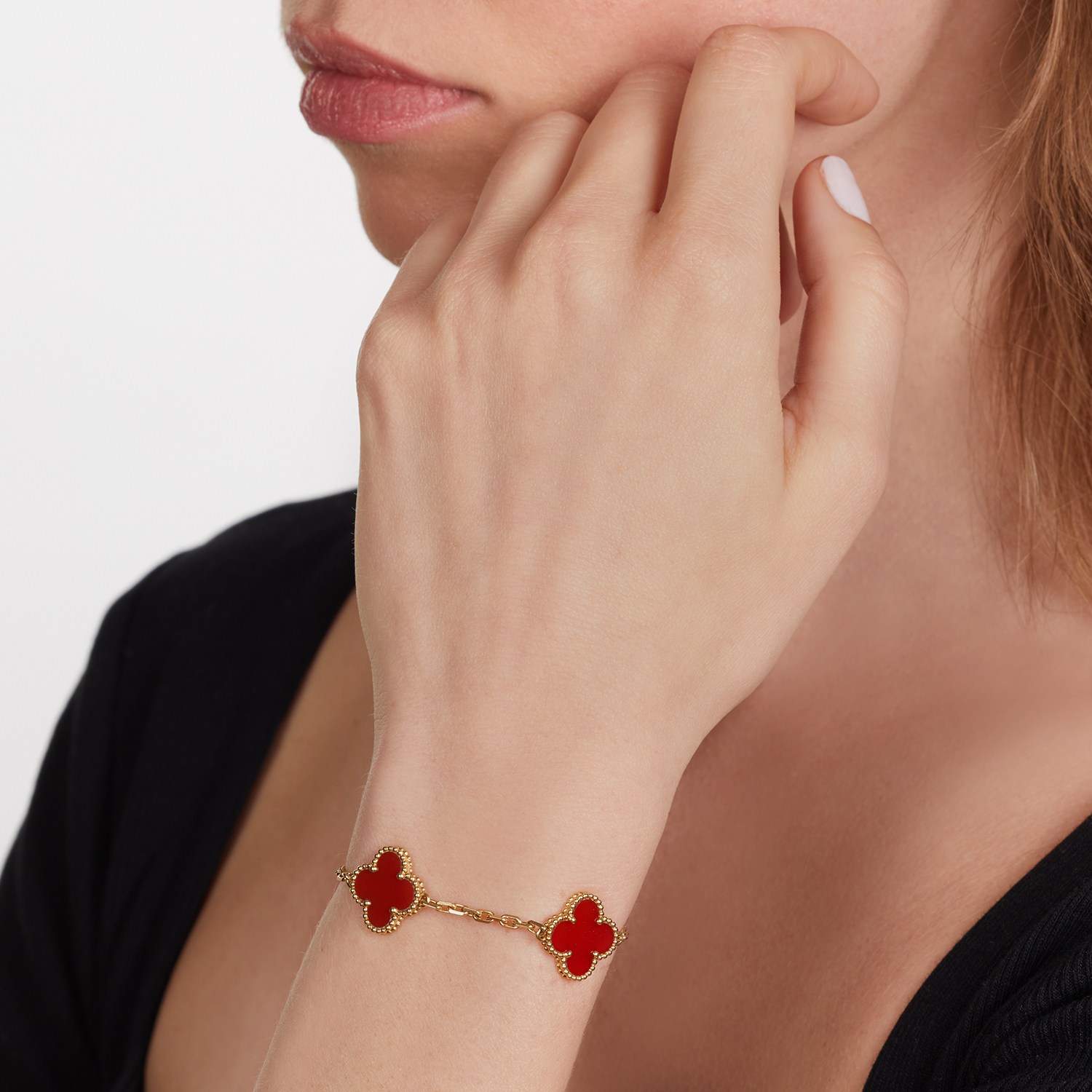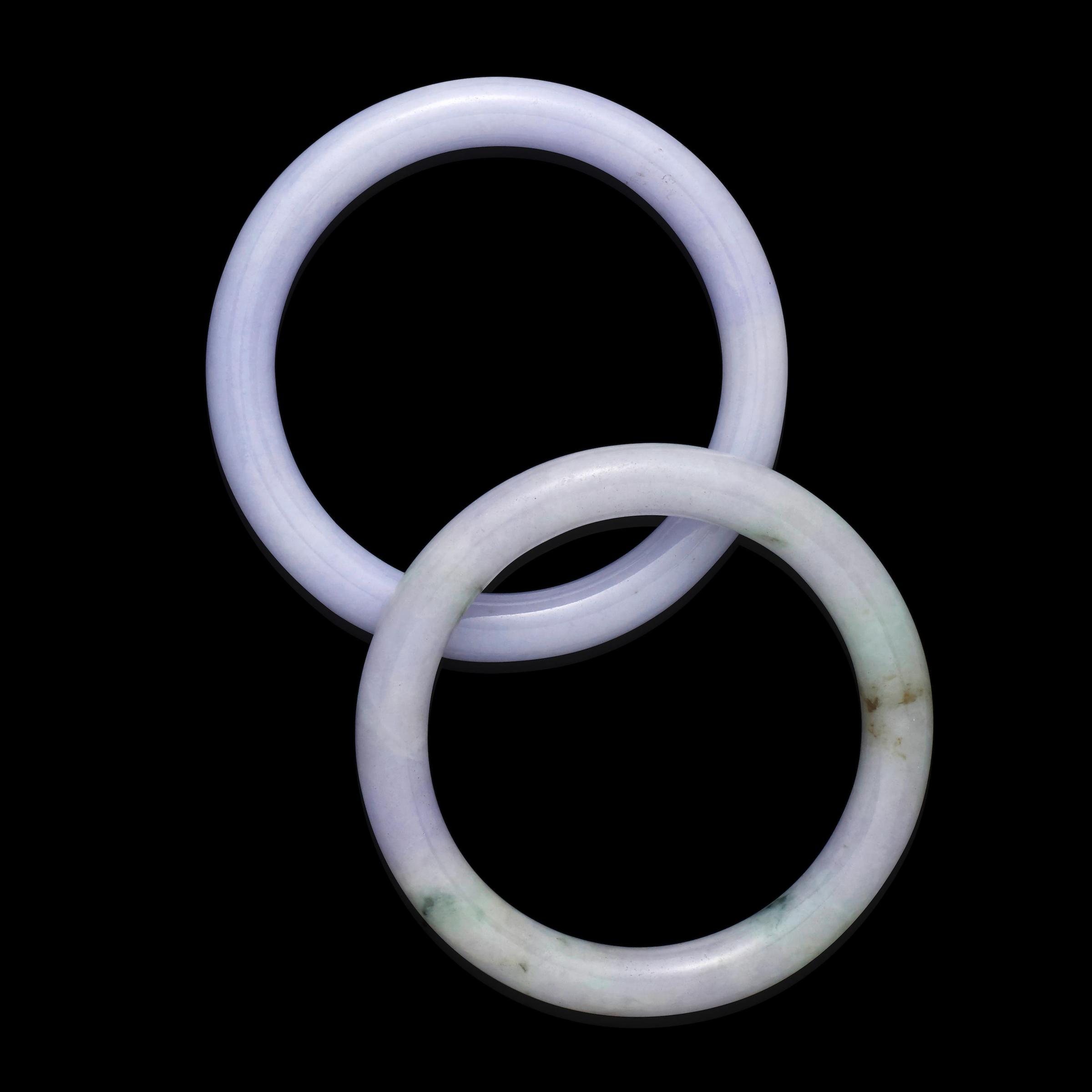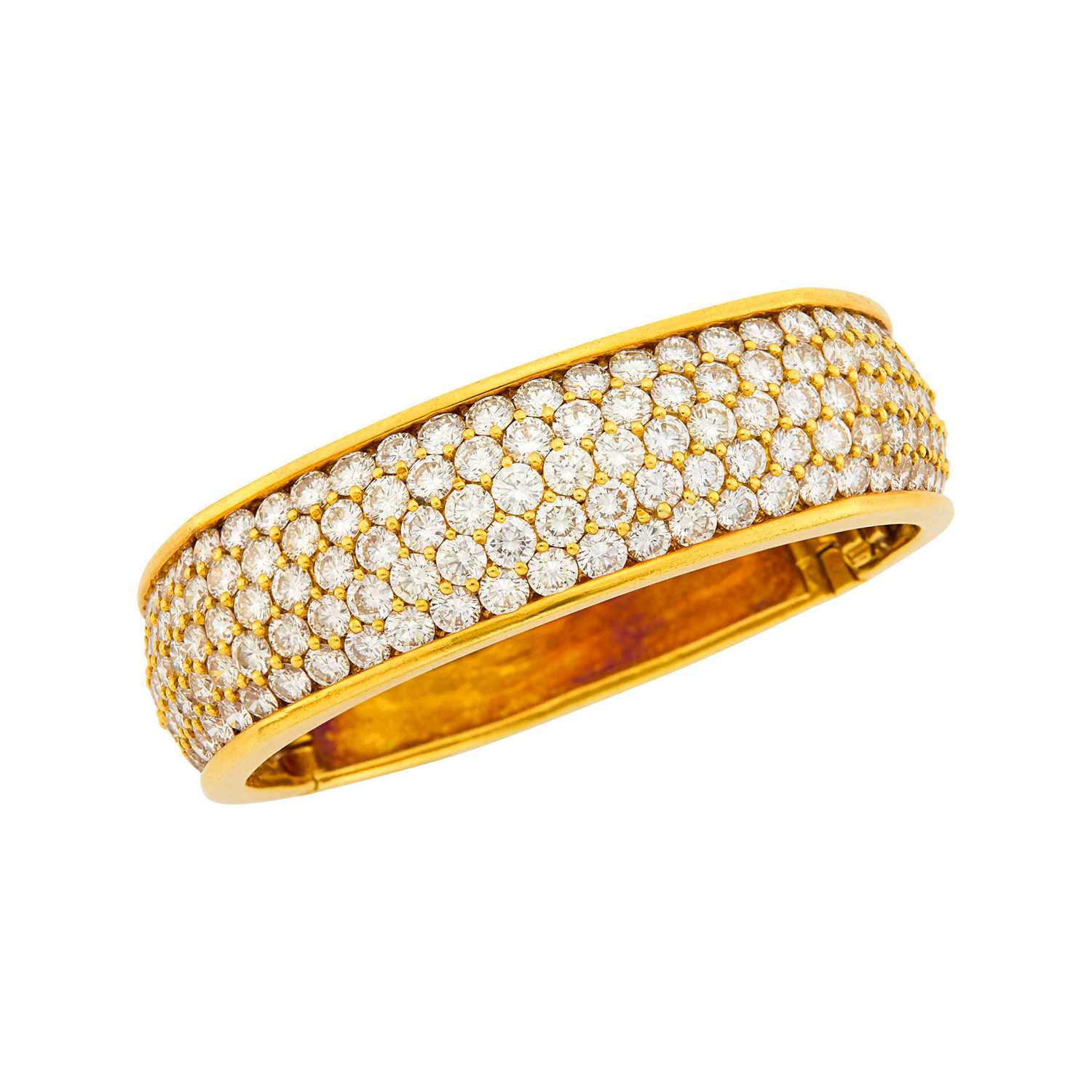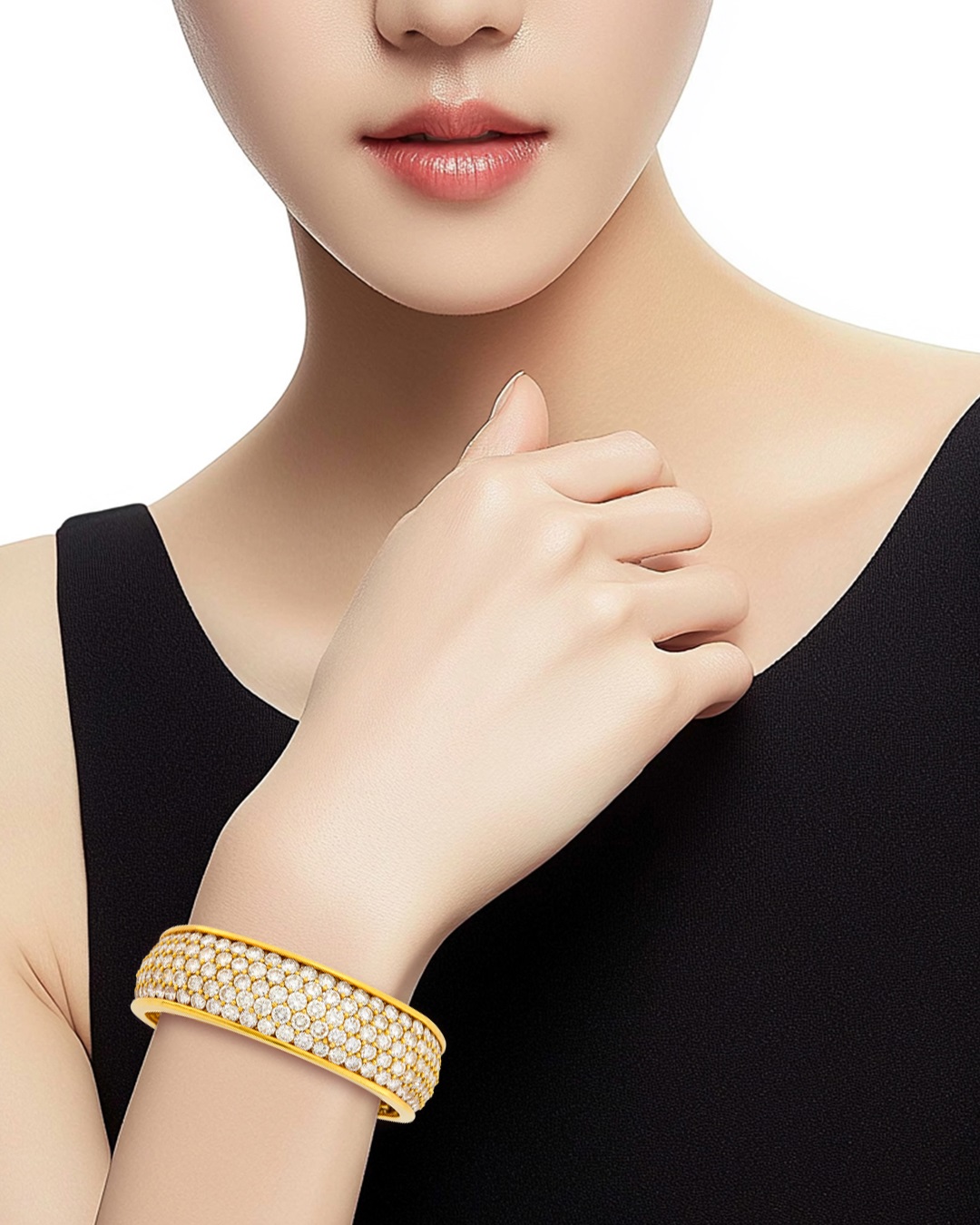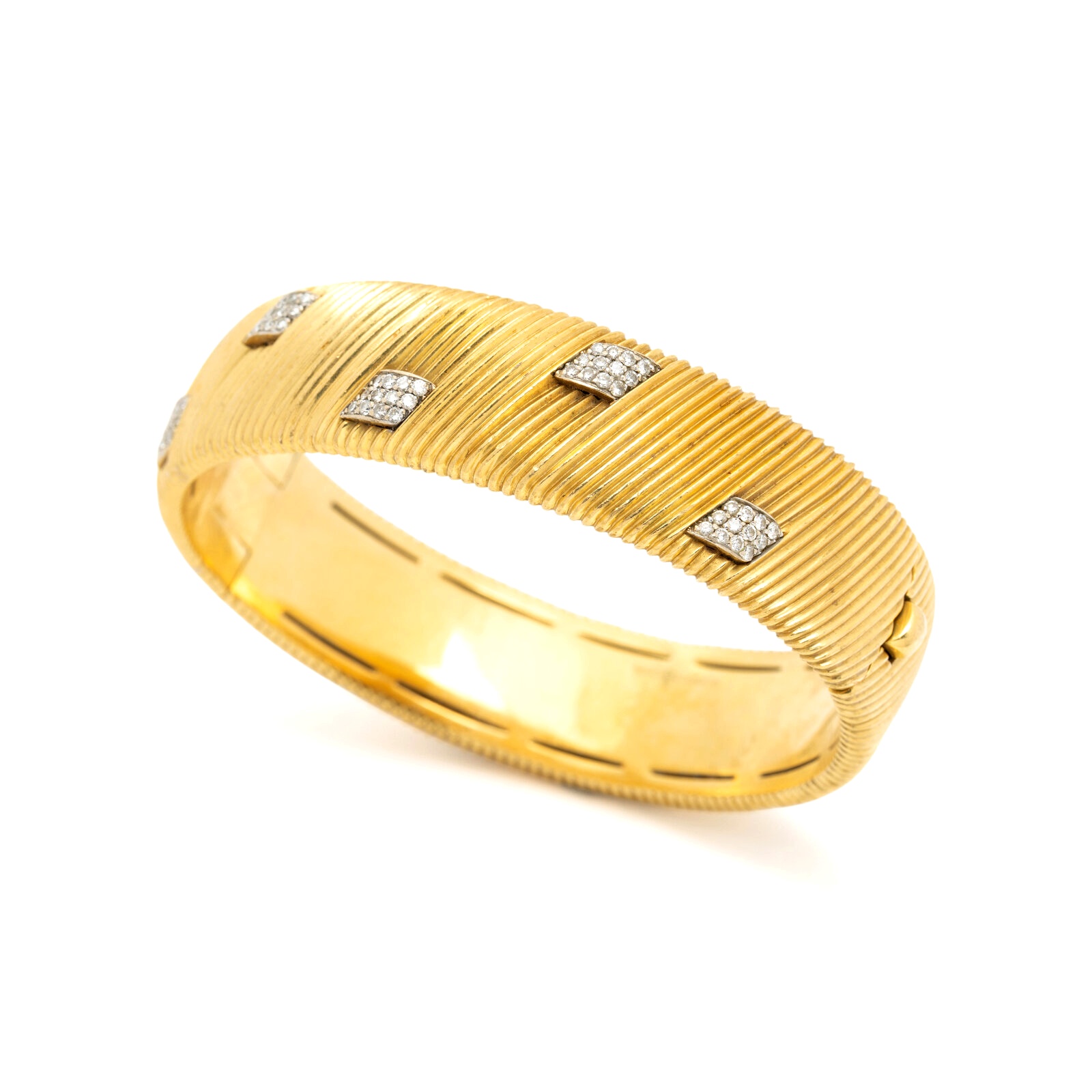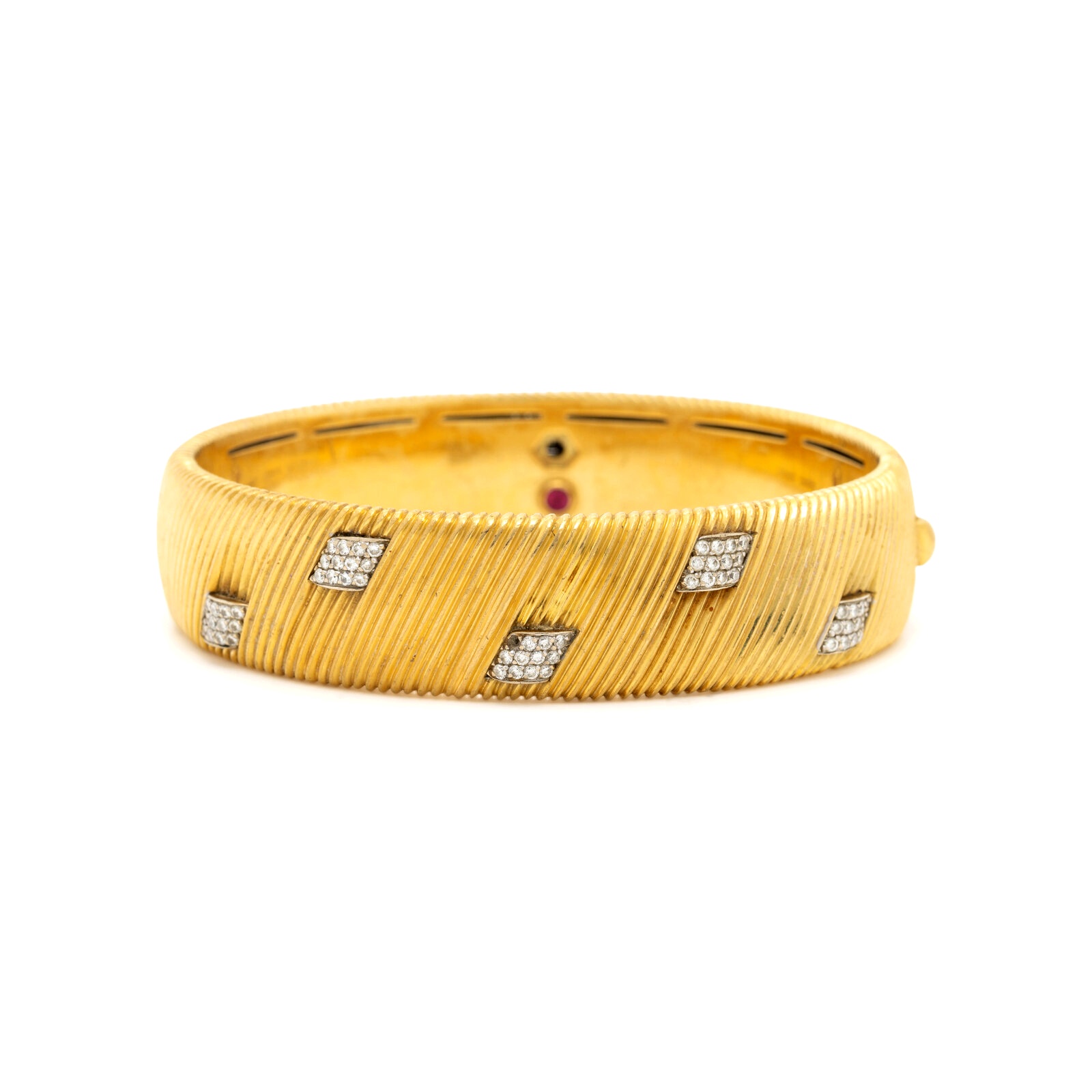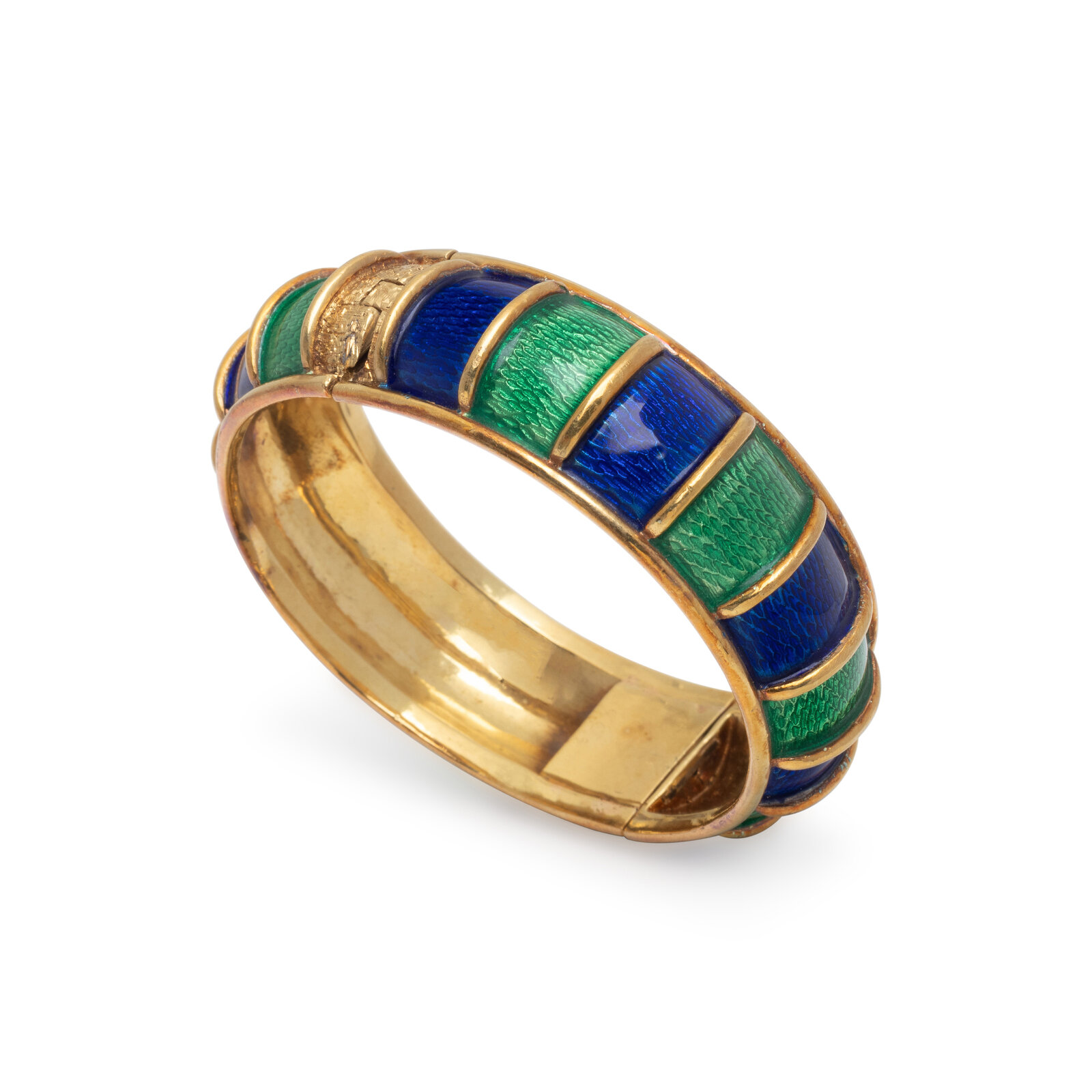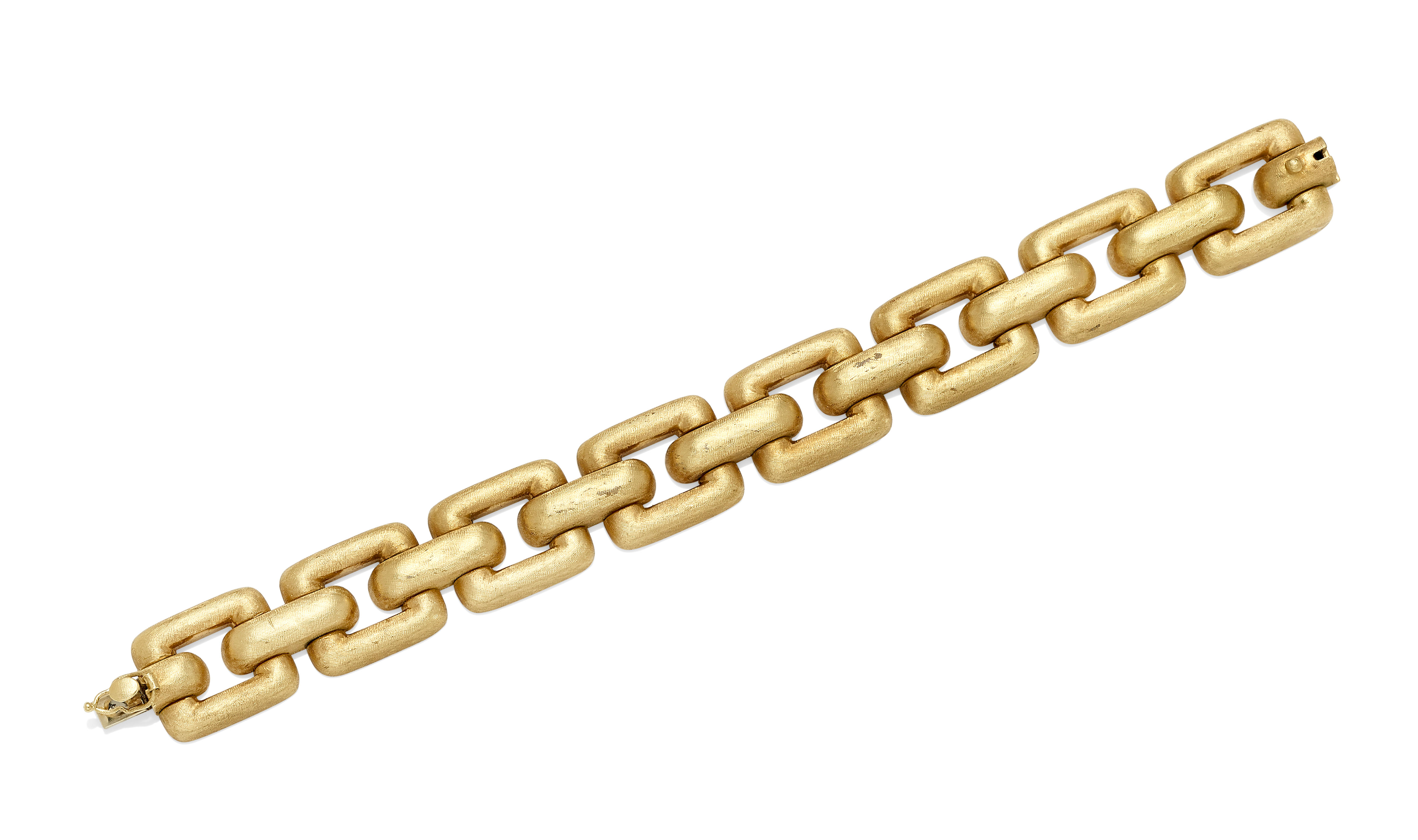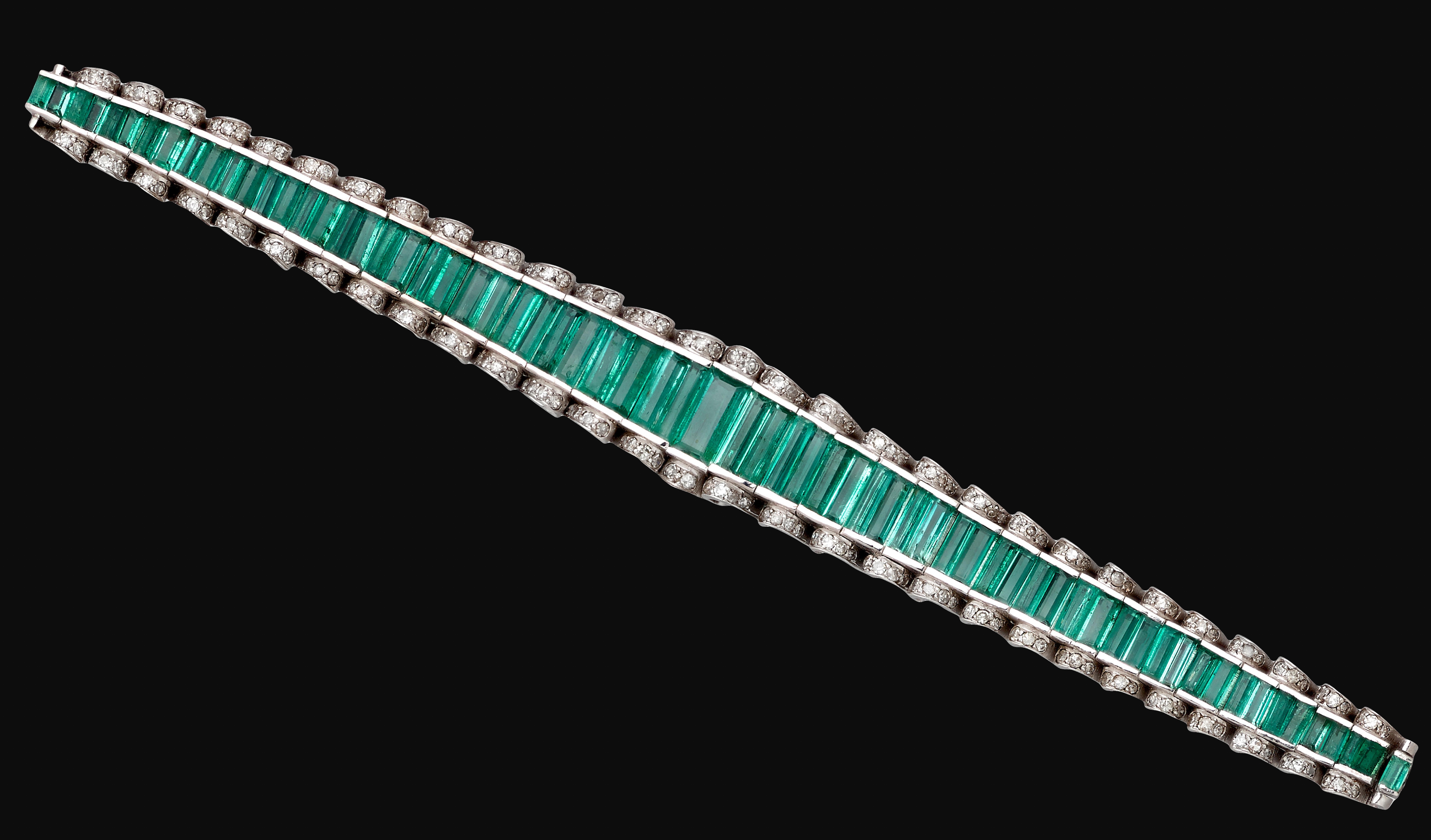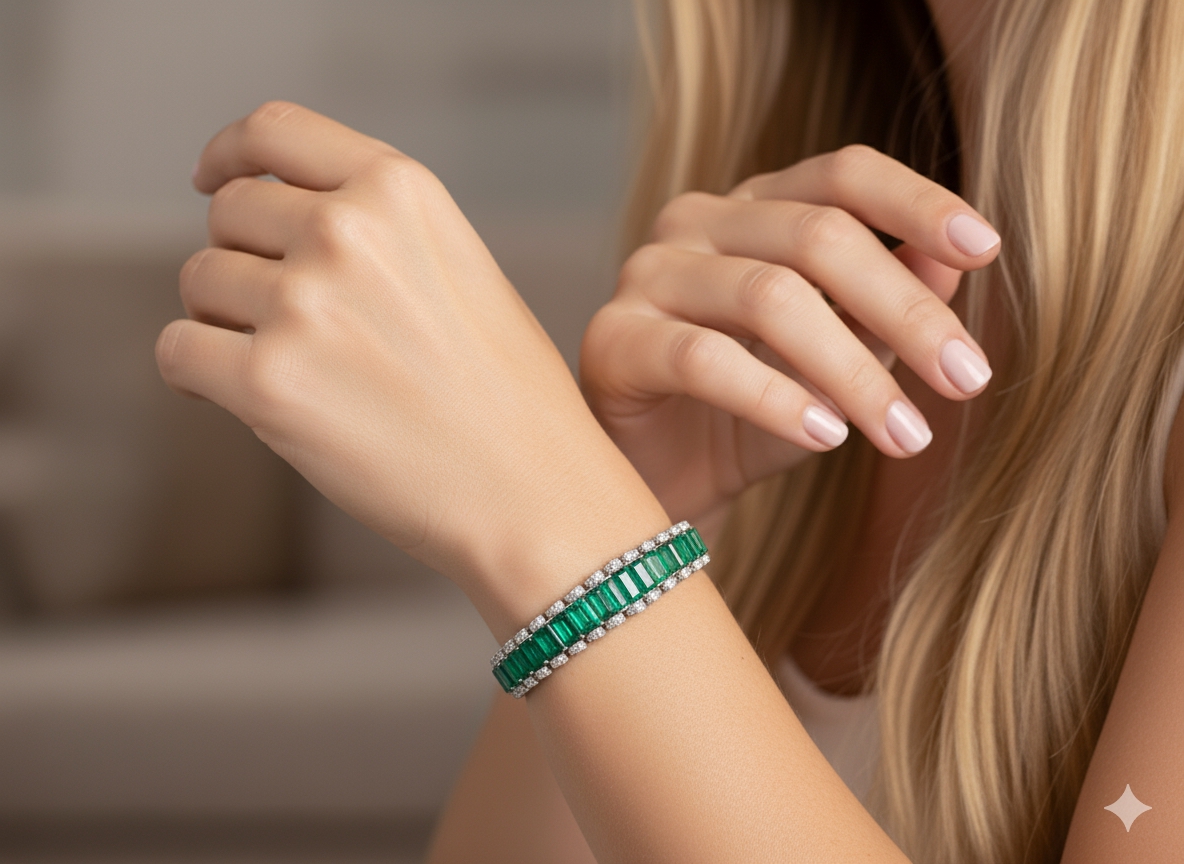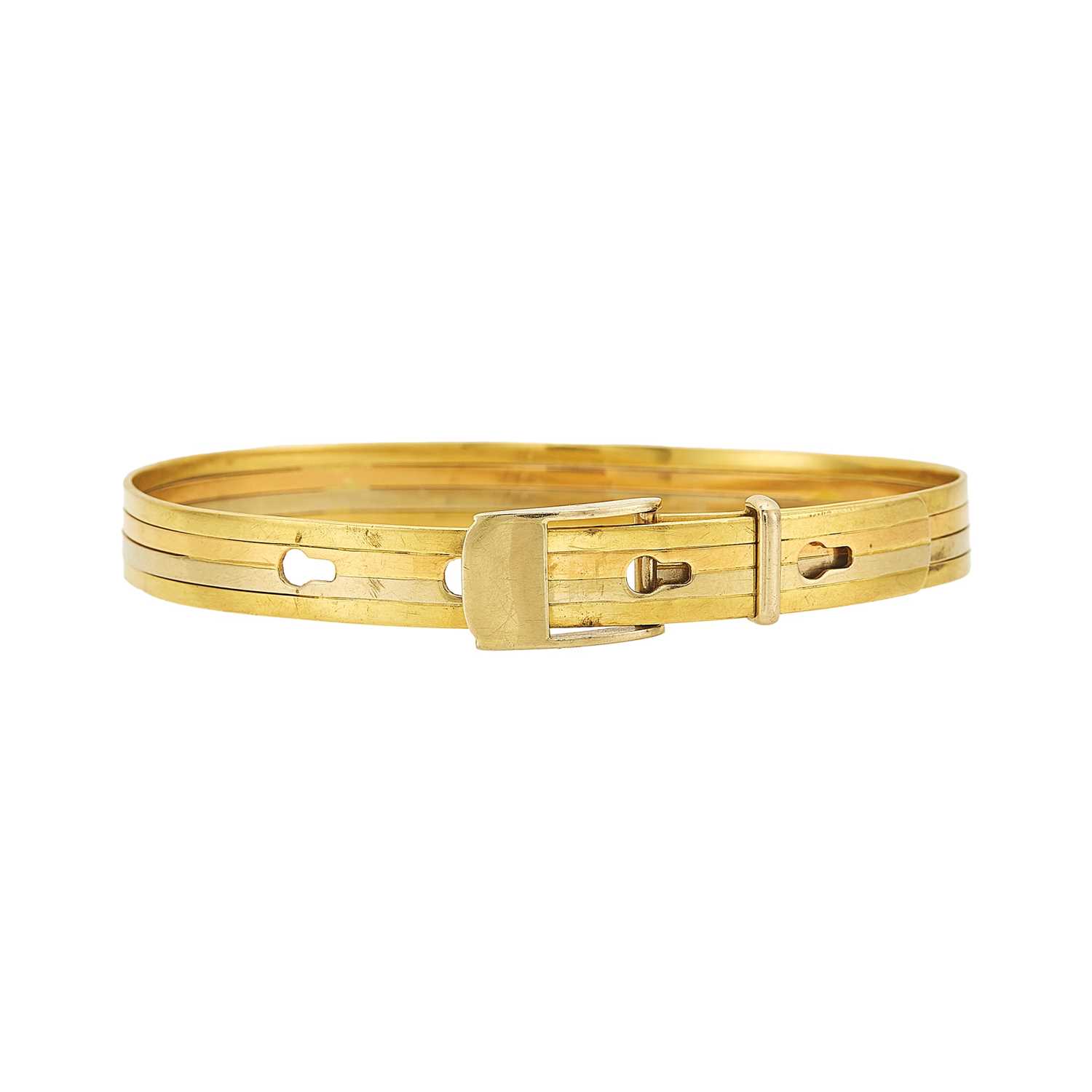Product Detail
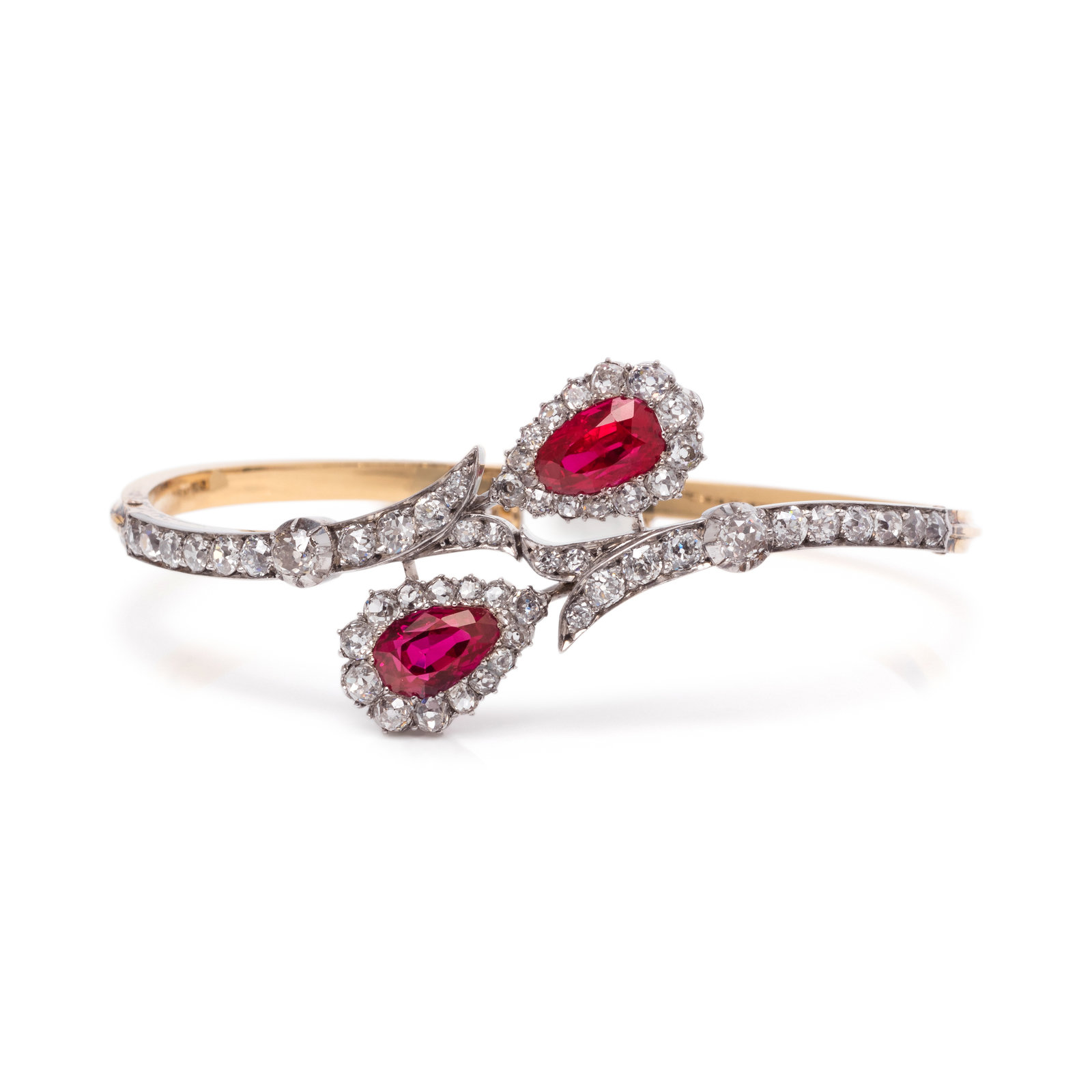
Antique No-Heat Burmese Ruby & Diamond Bracelet, 18th Century — Property from the Perry-Belmont Family
A refined 18th-century bracelet of lyrical asymmetry, designed as two graduating pear-shaped rubies—both certified Burmese and unheated—each framed by a halo of old mine-cut diamonds and joined by foliate diamond scrolls. The bracelet is executed in platinum-topped gold, hinged and fitted with a side clasp, the diamonds set in silver-white heads to heighten brilliance, the underside in warm gold as customary for the period. The rubies display vivid, saturated crimson with lively internal reflections consistent with fine material from Burma (Myanmar). From the distinguished Perry-Belmont Family of New York and formerly the property of Caroline Slidell Perry Belmont (1829–1892)—celebrated in her day as “Queen of Society”—this jewel unites rarity of origin, noble American provenance, and period craftsmanship. Accompanied by AGL, 2021, Report No. 1116725 A and B, stating Natural Corundum, Ruby, Burma (Myanmar), No Heat. The bracelet’s construction and materials test as 18-karat gold with platinum overlay, presenting in well-kept condition commensurate with age. A museum-worthy survivor of the American Gilded Age milieu, poised for both connoisseurship and collection.
Design: Bangle-6
Antique No-Heat Burmese Ruby & Diamond Bracelet, 18th Century — Property from the Perry-Belmont Family
A refined 18th-century bracelet of lyrical asymmetry, designed as two graduating pear-shaped rubies—both certified Burmese and unheated—each framed by a halo of old mine-cut diamonds and joined by foliate diamond scrolls. The bracelet is executed in platinum-topped gold, hinged and fitted with a side clasp, the diamonds set in silver-white heads to heighten brilliance, the underside in warm gold as customary for the period. The rubies display vivid, saturated crimson with lively internal reflections consistent with fine material from Burma (Myanmar). From the distinguished Perry-Belmont Family of New York and formerly the property of Caroline Slidell Perry Belmont (1829–1892)—celebrated in her day as “Queen of Society”—this jewel unites rarity of origin, noble American provenance, and period craftsmanship. Accompanied by AGL, 2021, Report No. 1116725 A and B, stating Natural Corundum, Ruby, Burma (Myanmar), No Heat. The bracelet’s construction and materials test as 18-karat gold with platinum overlay, presenting in well-kept condition commensurate with age. A museum-worthy survivor of the American Gilded Age milieu, poised for both connoisseurship and collection.- Metal - Platinum-topped gold; electronic test indicates 18-karat gold & platinum
- GemStones / Diamonds - Two pear-shaped rubies, approx. 9.50 × 5.70 × 5.10 mm and 9.30 × 6.00 × 4.70 mm; numerous old mine-cut diamonds
- Inner/Outer Circumference - Inner circumference 6 3/4 in. (approx.)
- Period - 18th Century
- Certification - AGL (2021) Report No. 1116725 A & B — Ruby, Burma (Myanmar), No Heat
- Mechanism - Hinged with side clasp
- Provenance - Property from the Perry-Belmont Family, Brooklyn, New York; owned by Caroline Slidell Perry Belmont
- Overall Condition - Very good antique condition
0 Comments
- Related Items
Enquire
Visit us at 580 5th Avenue, Suite 2404, New York, NY 10036.
The PH Gems gallery is open 10:00 AM – 5:00 PM, Monday – Friday.
Call us at +19174125842
Or contact us below
